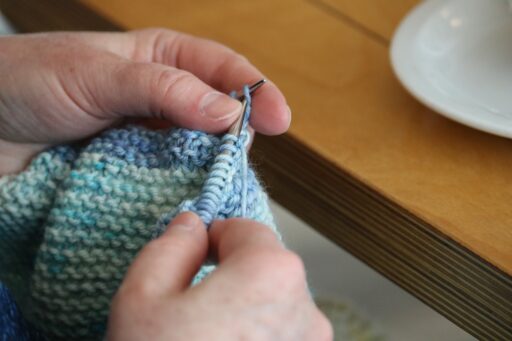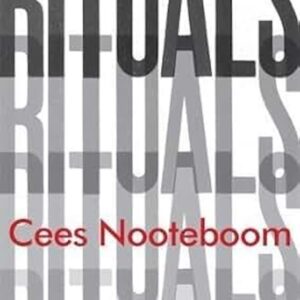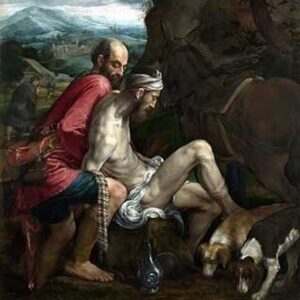Among my favorite activities are reading, writing, and knitting. So when my sister told me about an essay collection with the aptly punned title, Knitting Yarns: Writers on Knitting, I of course bought it immediately. Here were three of my top pastimes all together: I could read what well-known writers wrote about their knitting experiences.
So, here was Andre Dubus III recalling his girlfriend teaching him to knit:
“In the lamplight, her blond hair down around her shoulders, her eyes on the TV while her needles clicked away, she looked content and beautiful. She turned and smiled at me. Except for meals and sex and drinking in bars, there was very little we’d ever done together—but now she’d helped me to create something I couldn’t have without her.… I smiled back and returned to my knitting, to my looping and sticking and cinching in snugly before looping again, for this had become the conversation between us, the clicking of our needles, this soft woolen truce.”
And Jane Smiley on what knitting and novel-writing have in common, and why she enjoys both. They each “appeal to my pleasure in seeing how something turns out. I imagine a character or even just a moment…. Another character walks into the room…and does something. As he does, the novel comes alive.” Although knitting “is mapped” (patterned), it still gives her, as novel-writing does, “the sense of surprise at what is being made, has been made.”
Other writers, too, speak about similarities between writing and knitting. John Dufresne quotes from the book Knitting for Dummies on reasons for knitting (followed by his response to each reason):
- It’s relaxing. So is a martini. A dry martini and a good book: heaven.
- You get a feeling of accomplishment—you get to use your imagination, patience, and perseverance to create something from nothing. Which is exactly what I already do all day when I’m writing stories.
- It keeps your hands and mind occupied. Like writing stories.
- It’s portable. Ditto!
Ann Hood shares her discovery that learning a difficult knitting technique is good preparation for writing: “On the evening I spent [on YouTube] learning to knit cables, something in me changed.… I decided to write books for children, historical fiction, a television pilot. Because I’m not afraid to try, to learn, to knit the hardest thing.”
On another note, several writers comment on how knitting is meditative, how it has a Zen quality:
“Knitting, like reading, is a form of meditation.”
I discovered “the meditative, creative, and spiritual benefits of knitting.”
And interestingly, one writer who is not a knitter says she finds that just watching someone knit is soothing.
One of the most fun aspects of this book for me was writers’ wordplay with the language of knitting:
“I can knit my brow. My fractured bone might knit itself. My stomach might be tied up in knots.… But knit? I cannot. Not yet.”
“Every Sunday afternoon during my childhood, we all met at my grandmother’s flat for dinner.… And after the meal…the women stayed in the kitchen, smoked their cigarettes,…and told stories about people we’d seen at Mass that morning. I stayed in the kitchen and listened. And that’s where I learned to love stories: the knitting together of images, scenes, language, and plot. That turns out to be the fiction writer’s job: to attend to the gossip and spread it as far as he can.”
But the writer who plays most with the language of knitting is Barbara Kingsolver. (For you non-knitting readers, here are a few definitions you’ll need in order to follow her: yarns have a range of “plies” (strands); a “blocking board” is the surface on which you pin a wetted finished piece of knitting to shape it to the dimensions you want; and “gauge” is how many stitches and rows you get to an inch.) So, now here’s a taste of Kingsolver, in what I find the most lusciously literary essay in this book:
On a chilly fall day, “this is the whole world calling you to take up your paired swords [her knitting needles] against the brace of the oncoming freeze. The two-plied strands of your chromosomes have been spun by all thin-skinned creatures for all of time.” “You will want to nail down all these wadded handfuls of time, to stick-pin them to the blocking board, frame them on a 24-stitch gauge. Ten to the inch, ten rows to the hour, straggling trellises of days held fast in the acreage of a shawl.” “Your feet want to run for their lives, but your fingers know to dig in the bag and unsheathe their handy stays against impatience, the smooth paired oars, the sturdy lifeboat of yarn.… You alone are swaddling the world in wool.” Then in springtime, “the earth frets and dreams, and knits herself wordless.”
Kingsolver ends her essay back in autumn:
“The sunshine, heavenly photosynthetic host, sweet leaves of grass all singing the fingers electric that tingle to brace the coming winter, charged by the plied double helices of all creatures that have prepared and justly survived on the firmament of patience and swaddles children. It’s all of a piece, knitting. All one thing.”
And now that I’ve finished writing this post, I’m going to pick up my current knitting project and click along with these writers’ knitting yarns.
Peggy Rosenthal has a PhD in English Literature. Her first published book was Words and Values, a close reading of popular language. Since then she has published widely on the spirituality of poetry, in periodicals such as America, The Christian Century, and Image, and in books that can be found here. Her book on knitting is called Knit One, Purl a Prayer.





